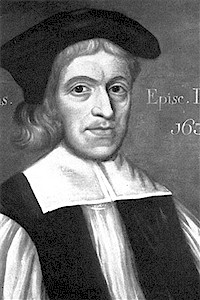This is a quick and belated blog for this week as I’ve been travelling to find yet more Durham books that are now elsewhere. I’m planning to write about them in the future, but for today I want think about two handwritten sets of lists that are still safely in Durham. Last week, Matthew wrote about Everything a Monk Needs and the William of St Calais booklist, that wonderful compendium of texts that would have supplied most of the new monastery’s needs in the 1080s. Sadly we don’t have anything quite like it for the sixteenth century, when the library had become much bigger.
Instead, when thinking about the sixteenth century library, we’re working in the gaps between two very different book lists. The last known medieval catalogue of Durham’s library is digitised here and there is a nineteenth-century edition here. It was made in 1392 and then updated haphazardly and sporadically for the next twenty years or so, with things like the list of books sent south to Durham College in Oxford for the monks studying there. The second list is from the late seventeenth century, and it is Elias Smith’s book list organised by classes, B IV 37, which is not online. I find it a bit hard to work with because it has duplicate entries for books, especially if an author wrote about more than one book of the Bible. It was also made after Bishop Cosin had given his generous collection to Durham Cathedral, and those books aren’t always clearly distinguished in this list.

Anything that has stayed here since the middle ages is in the Smith list. As far as I can tell, pretty much everything that Smith lists that can be identified as belonging to the medieval library is nicely and safely in the strongrooms. There are a couple of exceptions, such as a rather lovely Suidas that was given away by the Chapter in the eighteenth century and is now in the Harley collection at the British Library. But by and large, Smith’s catalogue tells us that the dispersal from the medieval library was largely complete by the late sixteenth and early seventeenth centuries. This is useful information because it narrows down the connections by which books were acquired by other people and scattered across England. Clearly, by the time Smith thought a new list of books was needed, the cathedral community were once again taking a strong interest in their books and spurred on by John Cosin, were once again collecting.
Wait a minute though. That’s a bit too simplified. We know that in 1556 Bishop Tunstall gave orders that the library was to be carefully kept. We also know that in 1560 Dean Horne was disputing with some of his canons over books that they had taken from the library, which he felt strongly were cathedral property. We have isolated records of new books being given to the library in the fifteenth and sixteenth centuries- in wills, or written into surviving books, including gifts of service books in Mary’s reign. It’s highly likely that there were other catalogues between the mid-fifteenth century and the seventeenth, that just simply haven’t survived.When a new list was made, the old list was probably discarded as no longer up-to-date. The 1392 catalogue slipped out of sight and so survived, and a good thing that was! Yes, the major dispersal happened in the mid to late sixteenth century, but it was also a time of acquisitions as the cathedral community argued about the necessary books for priests in the Reformation. Smith’s list marks one moment in the ongoing story of Durham’s library as a living collection.
